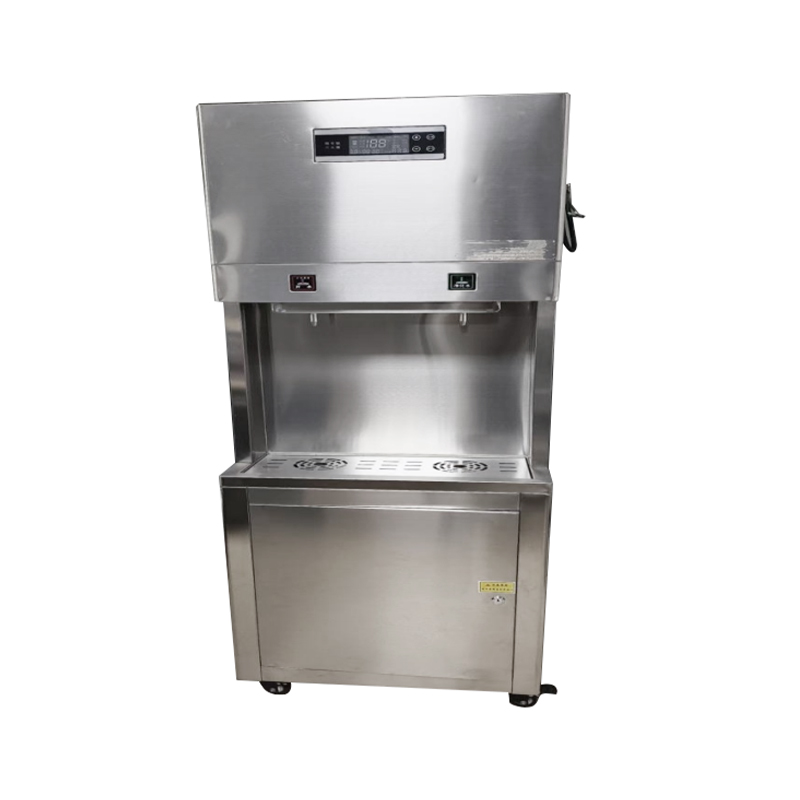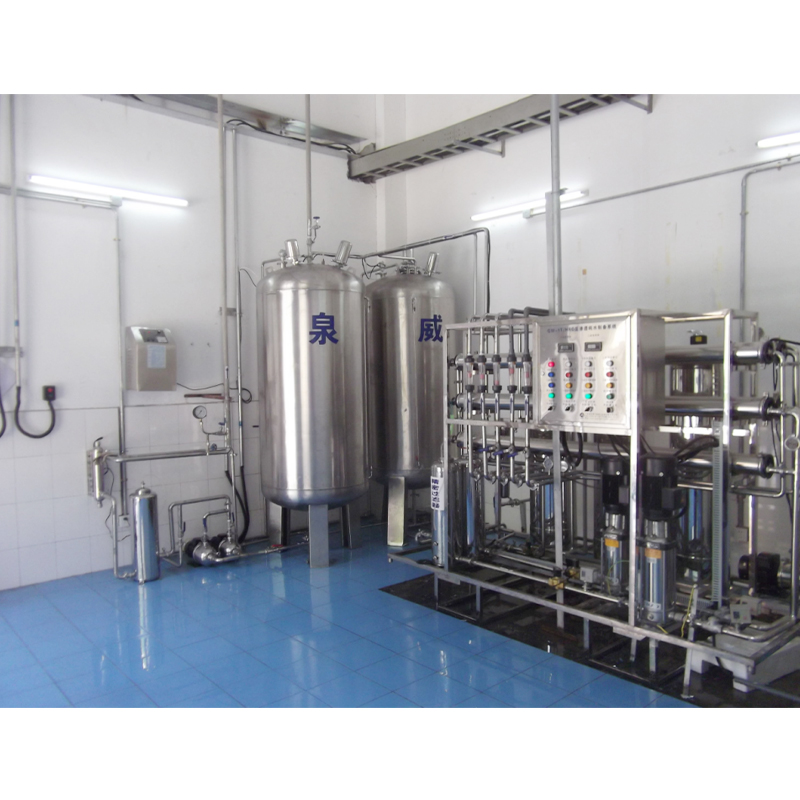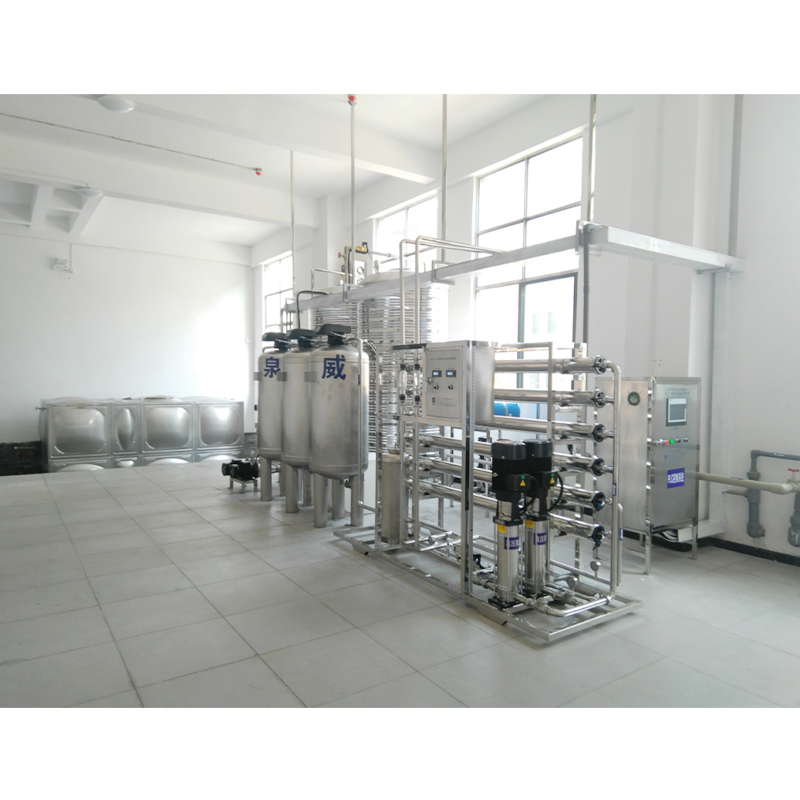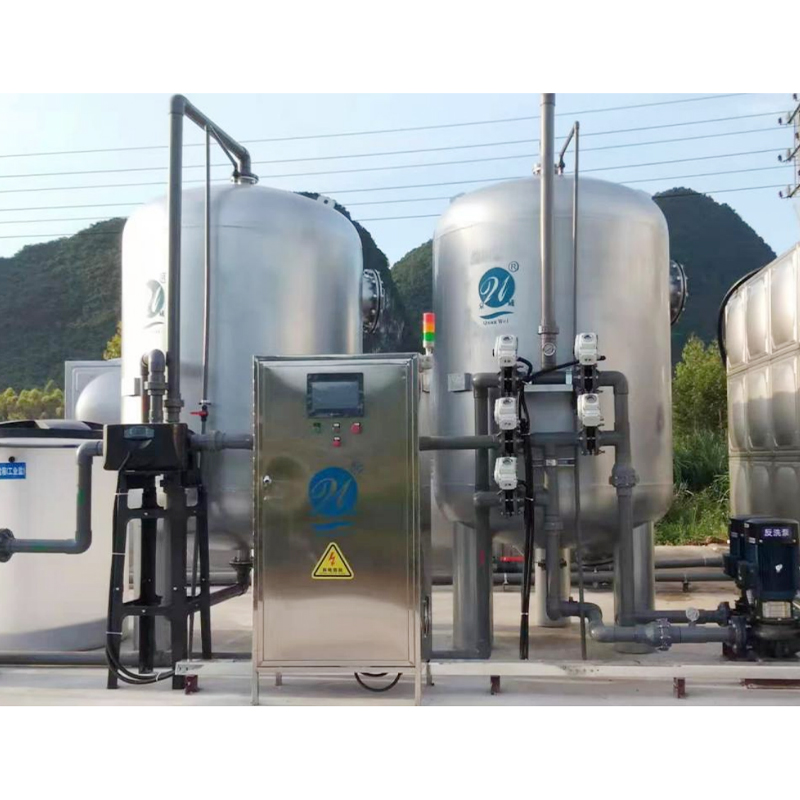How should the replacement cycle of respirator filter elements for purified water equipment storage tanks be scientifically formulated?
Release Time : 2025-09-04
The replacement cycle for filter cartridges in purified water equipment tank respirators must be determined based on the equipment's operating conditions, water quality characteristics, and risk control requirements. This approach aims to prevent both microbial contamination caused by filter failure and resource waste caused by excessive replacement. The key principle is to establish a baseline cycle through systematic validation, then optimize the cycle through dynamic monitoring and risk assessment, ultimately forming a maintenance strategy tailored to the actual operating conditions of the purified water equipment.
The operating conditions of purified water equipment form the basis for determining the replacement cycle. Different companies use different tank capacities, respiration rates, and sterilization processes for purified water equipment, necessitating an initial cycle based on equipment design parameters. For example, tanks with high air exchange rates increase the risk of filter cartridge clogging or contamination, necessitating a shorter replacement cycle. Equipment utilizing sterilization-in-place (SIP) processes, on the other hand, can benefit from a longer cycle because the sterilization process partially restores filter cartridge performance. Companies should initially determine a theoretical replacement cycle by continuously monitoring equipment operating data (such as respiration rate and number of sterilization cycles) and combining it with filter cartridge material properties (such as the temperature resistance of the PTFE hydrophobic membrane).
Water quality directly impacts filter cartridge life. High concentrations of microorganisms, particulate matter, or organic matter in the raw water of purified water equipment can accelerate filter clogging and reduce microbial retention capacity. For example, high residual chlorine content in raw water can cause filter material aging, while excessive particulate matter can shorten the filter's filtration path. Companies should regularly test the raw water and tank air quality (such as microbial load and particle count) and adjust the cycle based on fluctuations in water quality. If water quality remains stable over time, the theoretical cycle can be extended. However, if water quality deteriorates (e.g., if microbial loads exceed the standard), the filter should be replaced in advance and the purified water equipment's pretreatment system should be investigated for malfunctions.
Risk control requirements set the upper limit for replacement intervals. The core function of purified water equipment tank respirator filters is to prevent microbial contamination, so the cycle must meet regulatory requirements (such as GMP) and internal company quality control standards. Companies typically adopt a "most conservative approach," determining the cycle based on the operating conditions with the highest risk of filter failure (e.g., maximum load operation). For example, one company demonstrated through accelerated aging tests that its filter cartridges maintained their microbial retention efficiency after continuous operation. However, to mitigate risks, they still set the replacement interval at 80% of the theoretical lifespan and verified filter performance through integrity testing (such as the bubble point method).
Dynamic monitoring is a key tool for optimizing the replacement interval. During operation, filter cartridge performance in purified water equipment gradually degrades over time. Companies should regularly assess the filter cartridge's condition through testing (such as differential pressure monitoring and integrity testing). If the differential pressure increases significantly or the integrity test fails, the filter cartridge should be replaced immediately, even if the theoretical lifespan has not been reached. Conversely, if monitoring data indicates stable filter performance, the replacement interval can be appropriately extended. For example, one company, after continuous monitoring revealed no significant performance degradation after operation, extended the replacement interval from one year to 1.5 years and increased the integrity testing frequency to quarterly.
Verification and recordkeeping provide the scientific basis for determining the replacement interval. Companies should develop a filter cartridge lifespan model based on long-term data accumulation (such as replacement reasons, water quality test results, and equipment operating parameters) and confirm the rationality of the replacement interval through validation testing (such as challenge testing). For example, one company, through simulating filter performance changes under different water quality conditions, found that for every order of magnitude increase in the raw water microbial load, the filter lifespan shortened. Based on this, they developed a tiered cycle strategy. Furthermore, all replacement records should be included in the purified water equipment maintenance file to provide data support for cycle optimization.
An emergency response mechanism supplements cycle management. Even if the theoretical cycle has not been reached, filter cartridges should be replaced immediately if they are damaged, fail integrity testing, or have abnormal tank water quality (e.g., exceeding microbial counts). Companies should develop emergency response plans that clearly define procedures for handling sudden filter failure (e.g., temporarily increasing sterilization frequency or using spare filters) and conduct regular drills to ensure operational effectiveness. For example, one company set a "warning threshold" within the filter replacement cycle (e.g., when the pressure differential rises to 80% of the initial value). When this threshold is reached, enhanced monitoring is initiated to mitigate the risk of sudden failure.
The replacement cycle for respirator filters in purified water equipment tanks should be scientifically managed through a closed-loop management process: "theoretical formulation - dynamic monitoring - verification and optimization - and emergency response." Enterprises should establish a data-based cycle model based on equipment operating conditions, water quality characteristics and risk control requirements, and improve the reliability and economy of purified water equipment operation through continuous improvement.







